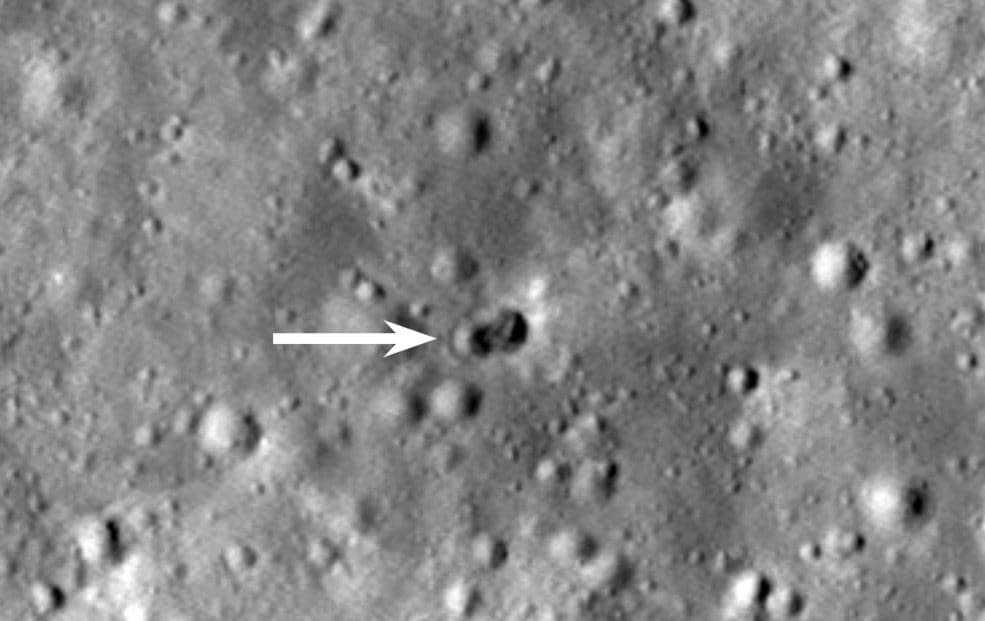Mystery rocket crashes into the Moon – and no one (on Earth) is owning up

A mystery rocket has crashed into the Moon, creating a large double crater, leaving Nasa scientists baffled at who was behind the launch and why its impact was spread over two distinct areas.
No one on Earth has claimed responsibility for owning the rocket, and Nasa cannot explain why the impact created two craters when it crashed.
The vast hunk of metal was travelling at 3.3 miles a second when it smashed into the Lunar surface on March 4, but new images taken by Nasa's Lunar Reconnaissance Orbiter show that the impact was unlike anything they had seen before.
“Surprisingly the crater is actually two craters, an eastern crater (18-metre diameter, about 19.5 yards) superimposed on a western crater (16-metre diameter, about 17.5 yards),” the agency said in a statement.
“The double crater was unexpected and may indicate that the rocket body had large masses at each end. Typically a spent rocket has mass concentrated at the motor end; the rest of the rocket stage mainly consists of an empty fuel tank. Since the origin of the rocket body remains uncertain, the double nature of the crater may indicate its identity."
Amateur astronomers first pointed the finger at SpaceX, but then recalculated that it was likely to be from a 2014 Chinese lunar mission (Chang'e 5-T1). China has contested this, saying that the booster in question had "safely entered the Earth's atmosphere and was completely incinerated".
Bill Gray, an independent astronomer who created software which tracks objects in space, had to work backwards and compute an approximate orbit, because although China announces and televises its launches, it does not reveal their routes.
"I'm 99.9 per cent sure it's the China 5-T1," he told the BBC. He had previously thought it was a SpaceX booster.
Astronauts' faeces in ziplock bags left on Moon
There are hundreds of pieces of debris on the surface of the Moon, as well as lunar landers and even astronauts' faeces in ziplock bags.
Rocket boosters from the Apollo missions left a number of craters some 40 yards wide on the Moon's surface. In 2019, Israel's crashed Beresheet spacecraft scattered debris on the lunar surface.
At least 47 Nasa rocket bodies have created “spacecraft impacts” on the Moon, according to 2016 data from Arizona State University.
However, “no other rocket body impacts on the Moon created double craters,” said Nasa.
Japan, South Korea, Russia, India, and the United Arab Emirates aim to send missions to the Moon in the next year, while the US plans to land the first woman there in 2024.

